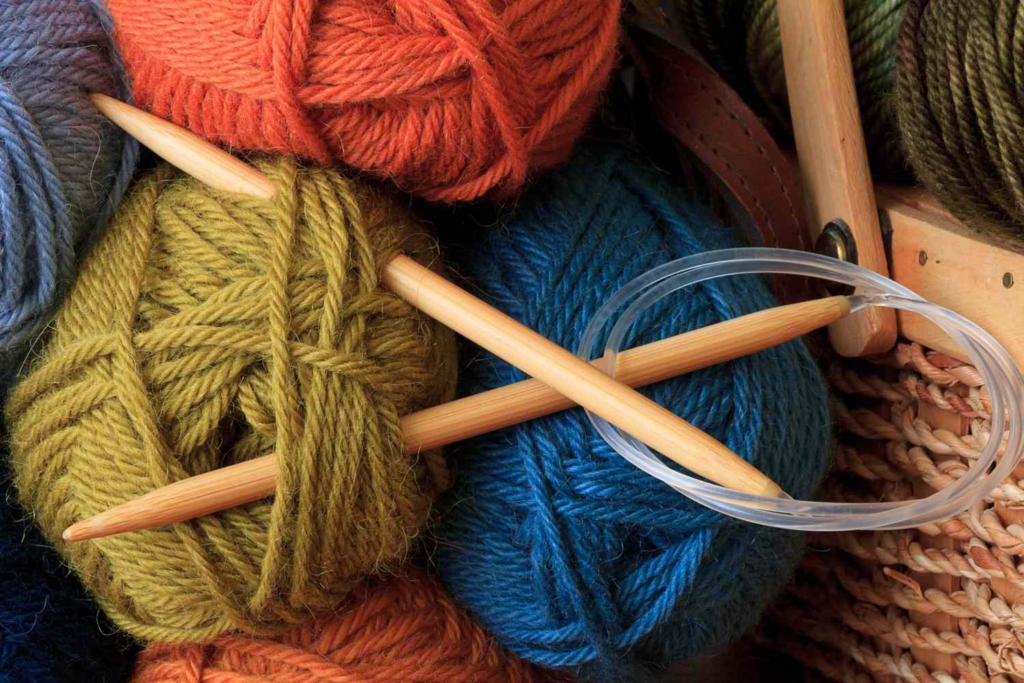You’ve chosen your yarn, a beautiful, soft skein that promises a cozy masterpiece. But before a single stitch is cast on, you face a fundamental choice: which knitting needles to use. This decision is more than just a practical first step; it’s the beginning of a beautiful relationship between crafter, tool, and material.
The humble knitting needle is far more than a pointed stick. It’s an extension of your hands, a key determinant of your gauge, and a huge influence on your overall enjoyment of the craft. If you’ve ever wondered why knitters have so many pairs, or what the real difference is between all those types, you’re in the right place. Let’s unravel the fascinating world of knitting needles.
The Material Matters: Feel, Sound, and Speed
The substance your needles are made from dramatically changes your knitting experience.
Wood & Bamboo: Beloved for their warmth and slight grip, these needles are perfect for beginners or those who struggle with slippery stitches. They’re quiet, lightweight, and gentle on the hands. Bamboo is particularly known for its flexibility and strength, while premium woods like ebony or rosewood offer a smooth, luxurious feel.
Metal (Aluminum, Stainless Steel): The speed demons of the needle world. Metal needles are incredibly smooth and slick, allowing stitches to glide off with lightning speed. They’re ideal for experienced knitters working with sticky yarns like cotton or bamboo. The distinctive soft click-clack sound is a satisfying soundtrack for many.
Plastic & Acrylic: Often the most affordable option, these are great for beginners, large projects (which can get heavy on wood or metal), and for travel (they’re rarely flagged by TSA). Modern composites can be very smooth and pleasant to use.
Carbon Fiber & Innovative Composites: The new kids on the block. These needles combine the lightweight feel of wood with the slickness of metal. They are incredibly strong and often have a matte finish that provides a perfect balance of grip and slide.
The Three Main Types: Straight, Circular, or Double-Pointed?
This is the big one. The shape of your needles defines what you can make and how you make it.

1. Straight Needles
The classic image of knitting. These are single, pointed sticks with a stopper on one end.
Best for: Flat projects like scarves, dishcloths, and blankets. They’re straightforward and great for learning.
The Catch: The weight of your project rests on your wrists, which can cause strain. They also limit the width of your project and cannot be used for knitting in the round.
2. Circular Needles
Two short needle tips connected by a flexible cable. Don’t let the name fool you—they are incredibly versatile for both round and flat knitting.
Best for: Absolutely everything. Knit hats, socks, and sweaters seamlessly in the round. For flat projects, the cable holds the weight of your work in your lap, not on your wrists, making them ergonomic champions. They are the preferred tool for magic loop technique and managing a large number of stitches.
Why They’re So Popular: They are versatile, portable (the project is contained on the cable), and easier on the body. Many knitters eventually make circulars their primary tool.
3. Double-Pointed Needles (DPNs)
Sets of four or five short, pointed needles used for knitting small circumferences in the round.
Best for: The crown of hats, sleeves, mittens, and socks—anything too small for a circular needle’s loop.
The Intimidation Factor: They look like a handful of tiny spears, which can be scary for beginners! However, with a little practice, they offer unparalleled control for small-diameter knitting.
The Interchangeable Revolution
For the avid knitter, interchangeable circular needle sets are a game-changer and a worthy investment. These kits contain needle tips in various sizes and cables in different lengths that you can screw together to create your perfect circular needle for any project.
Pros: Ultimate flexibility, cost-effective in the long run, and excellent organization (everything lives in one beautiful case).
Cons: A higher upfront cost. It’s also crucial to ensure the tips are securely connected to the cable to avoid the heartbreak of dropped stitches.
Finding Your Perfect Match: A Knitter’s Journey
The “best” needle is deeply personal. It depends on your knitting style (are you a tight or loose knitter?), what you like to make, and even sensory preferences (that satisfying metal click is a pro for some, a con for others).
The best advice? Experiment!
Borrow a pair from a knitting friend to test a new material. Visit your Local Yarn Store (LYS)—they often have sample needles you can try. Start with a material that matches your experience level (grippy bamboo for beginners, slick metal for speedsters) and a type that matches your project goals.
Your knitting needles are your partners in creation. They hold the potential of a tangled skein and, stitch by stitch, transform it into something filled with purpose and love. So choose your tools with curiosity, and happy knitting
